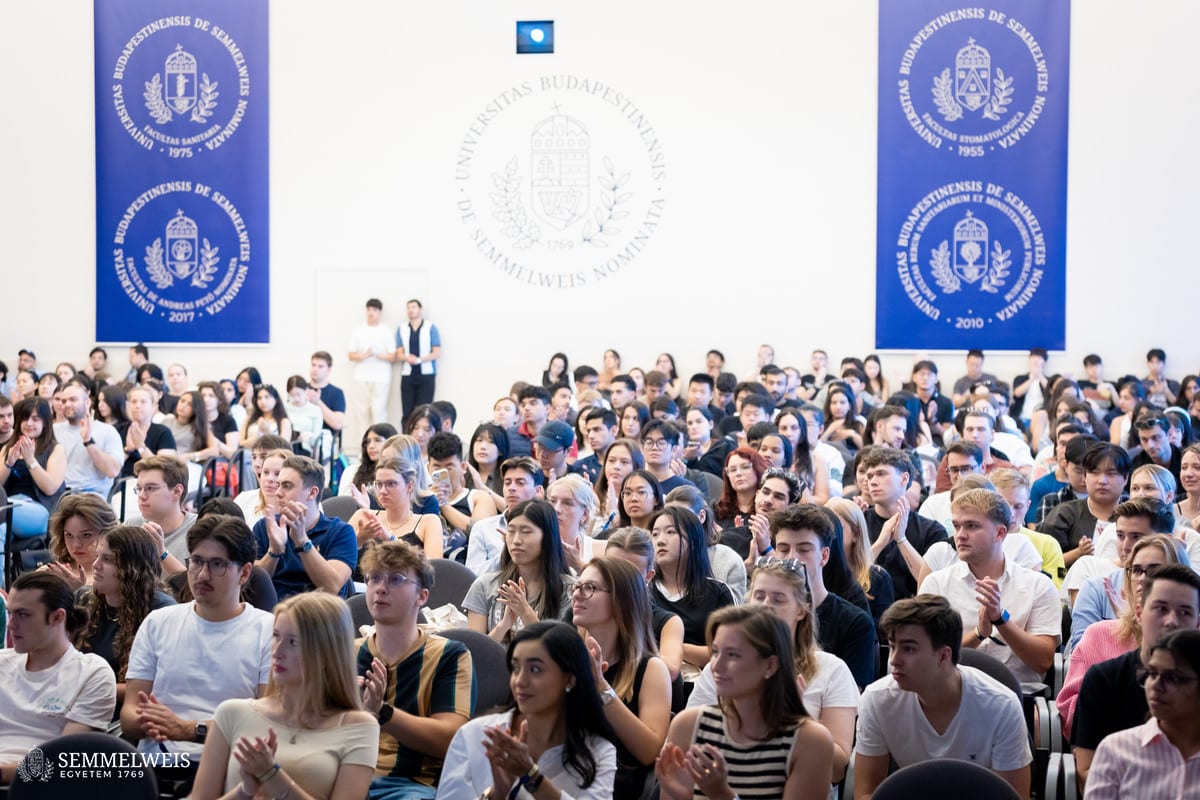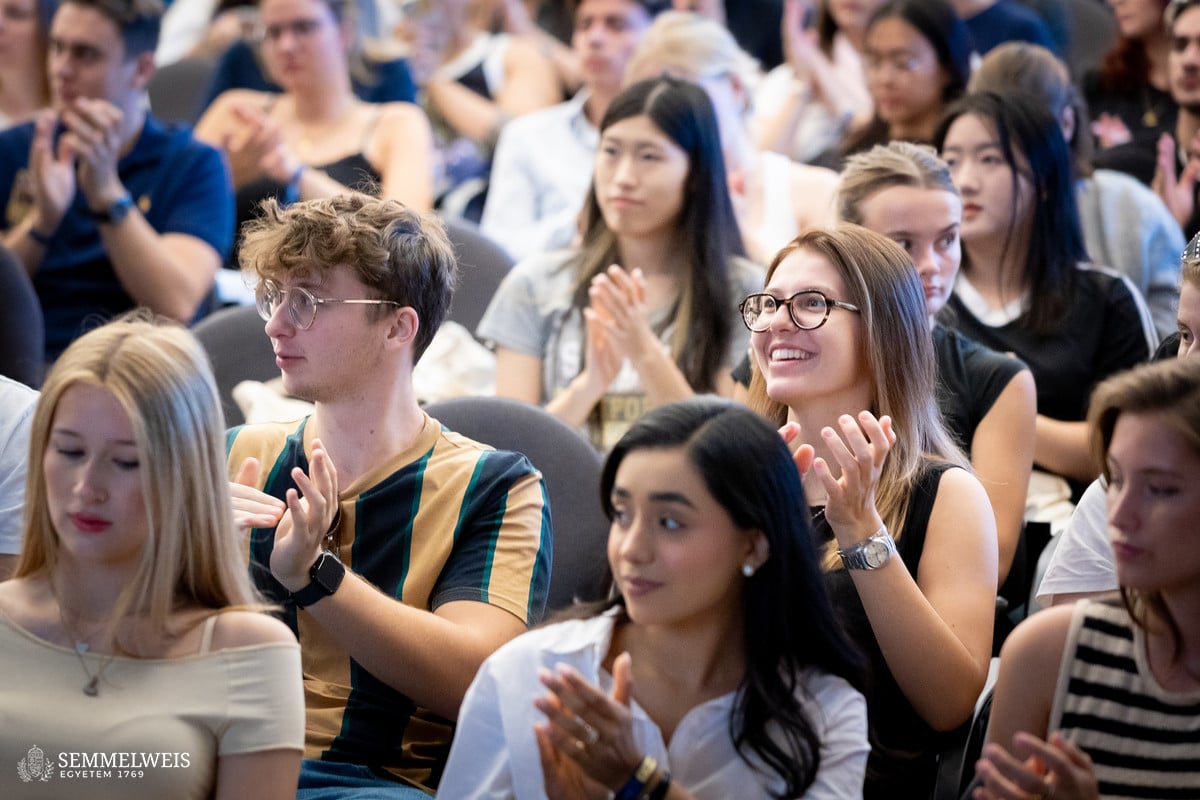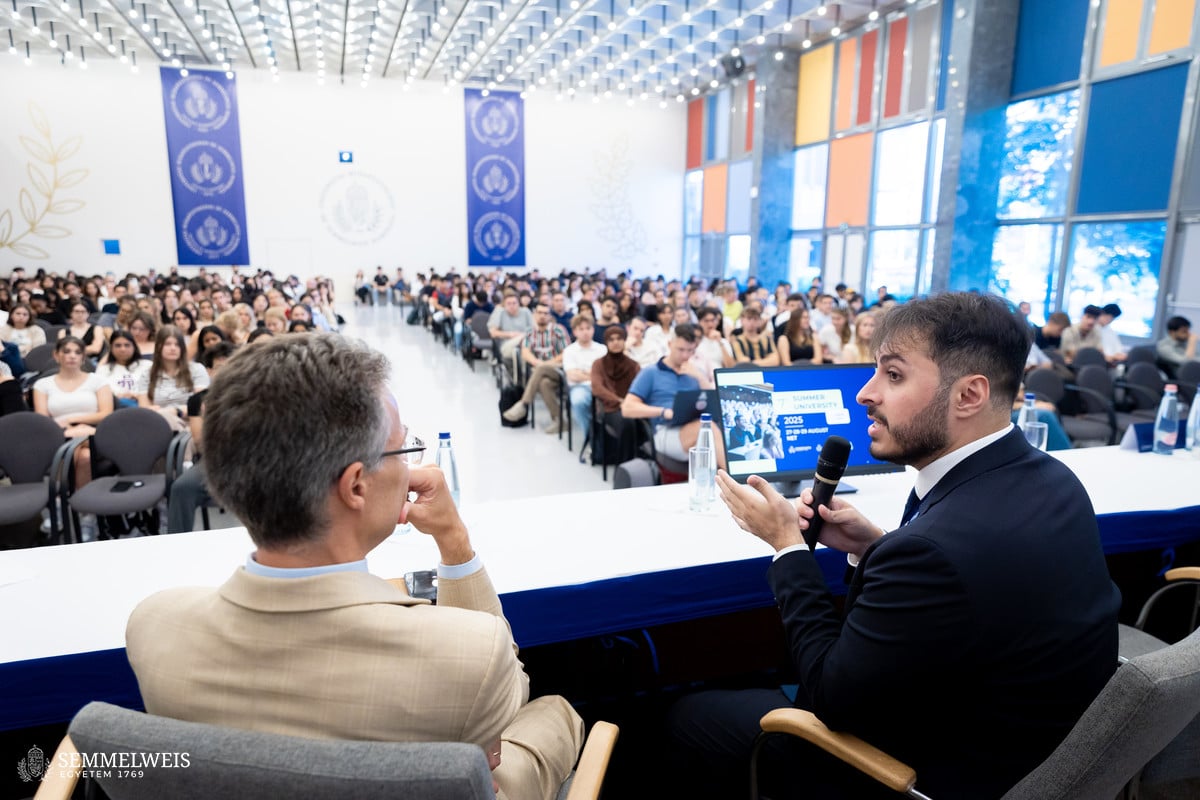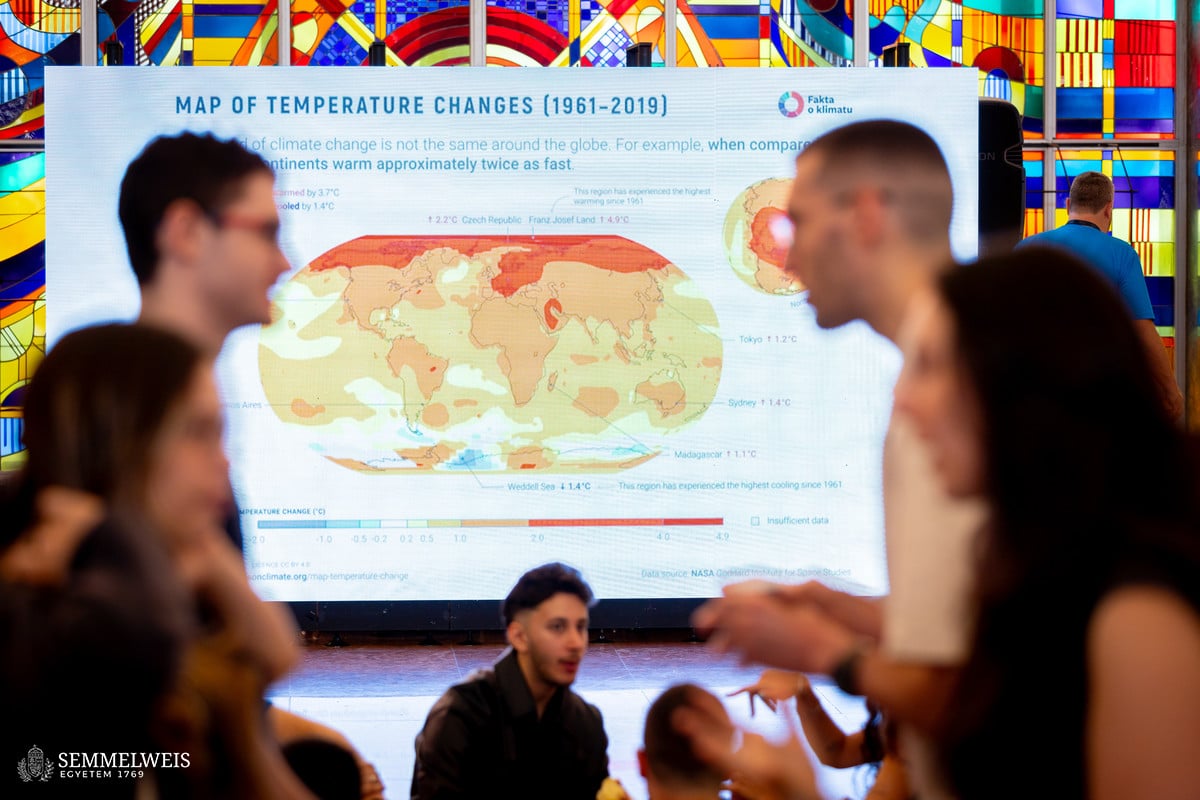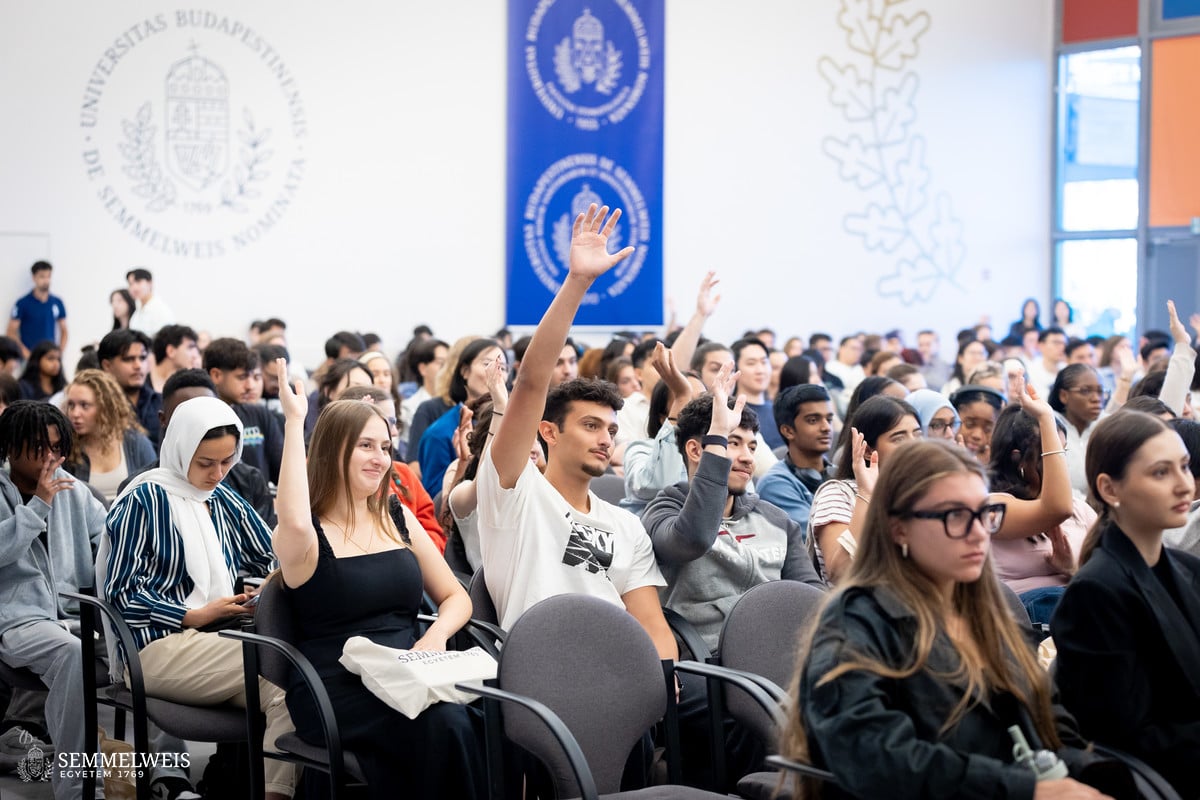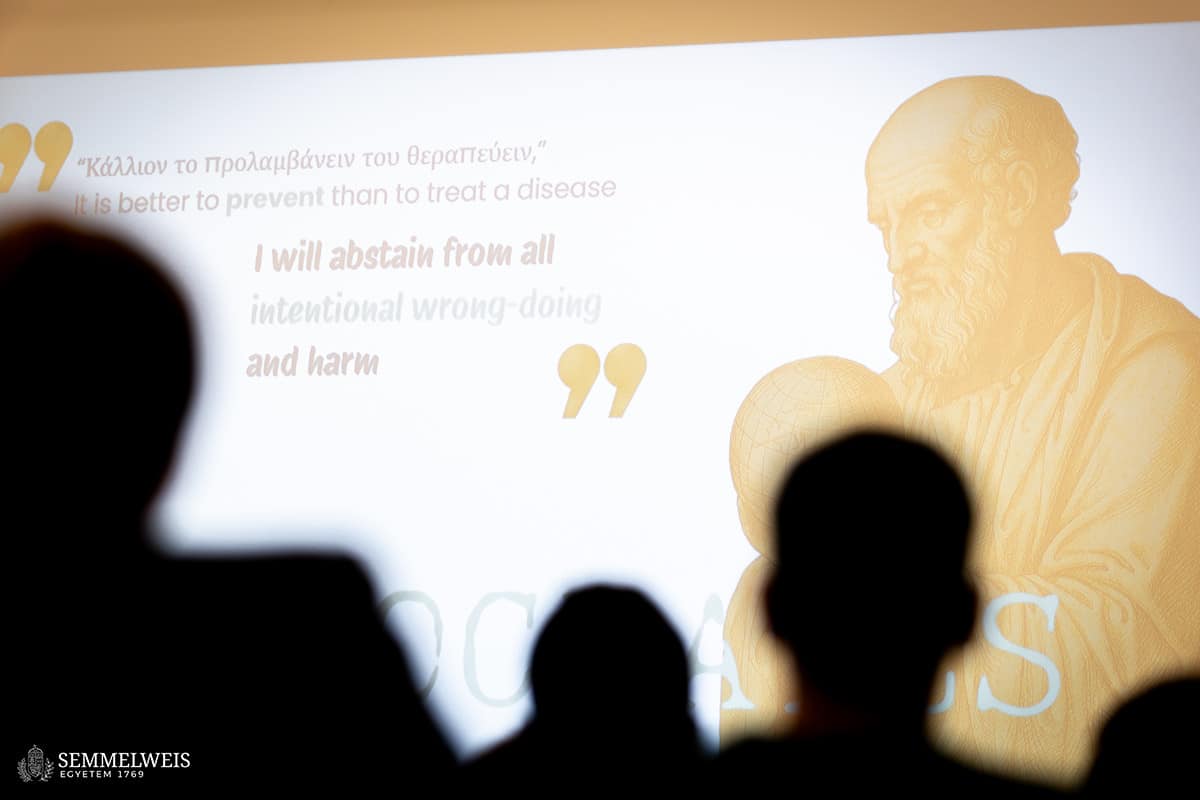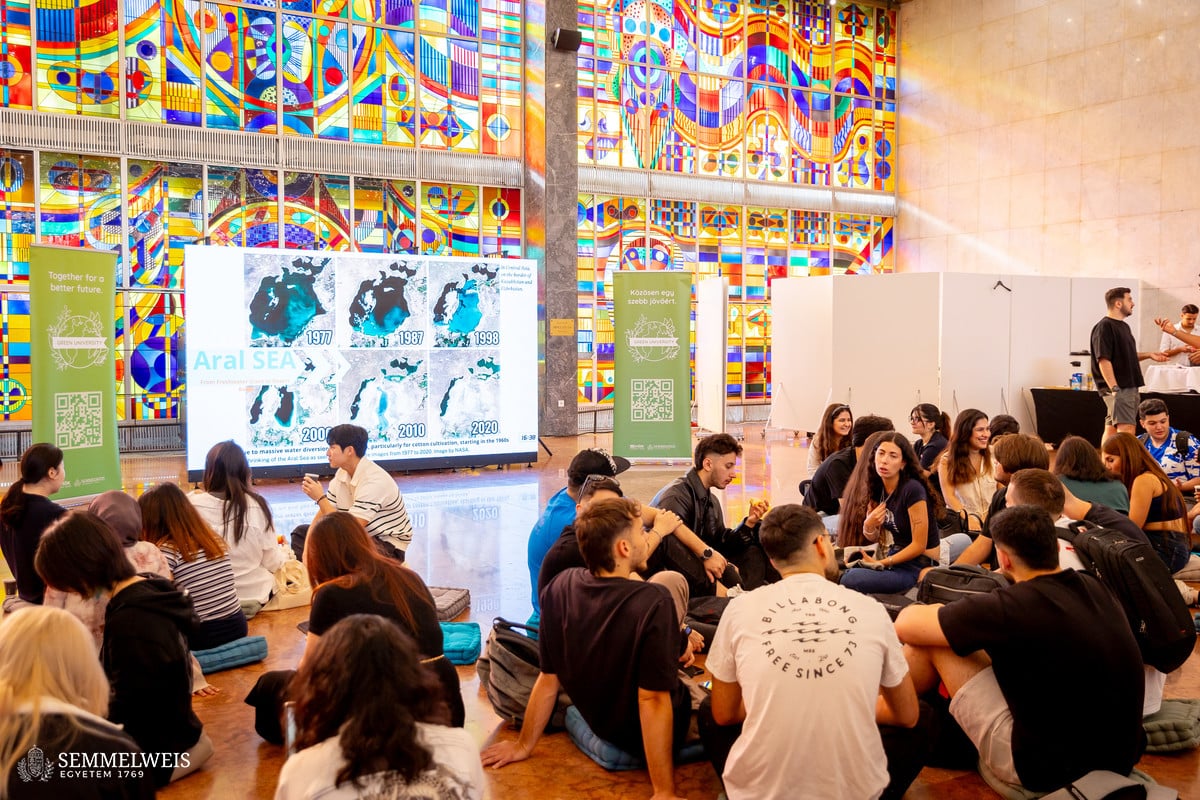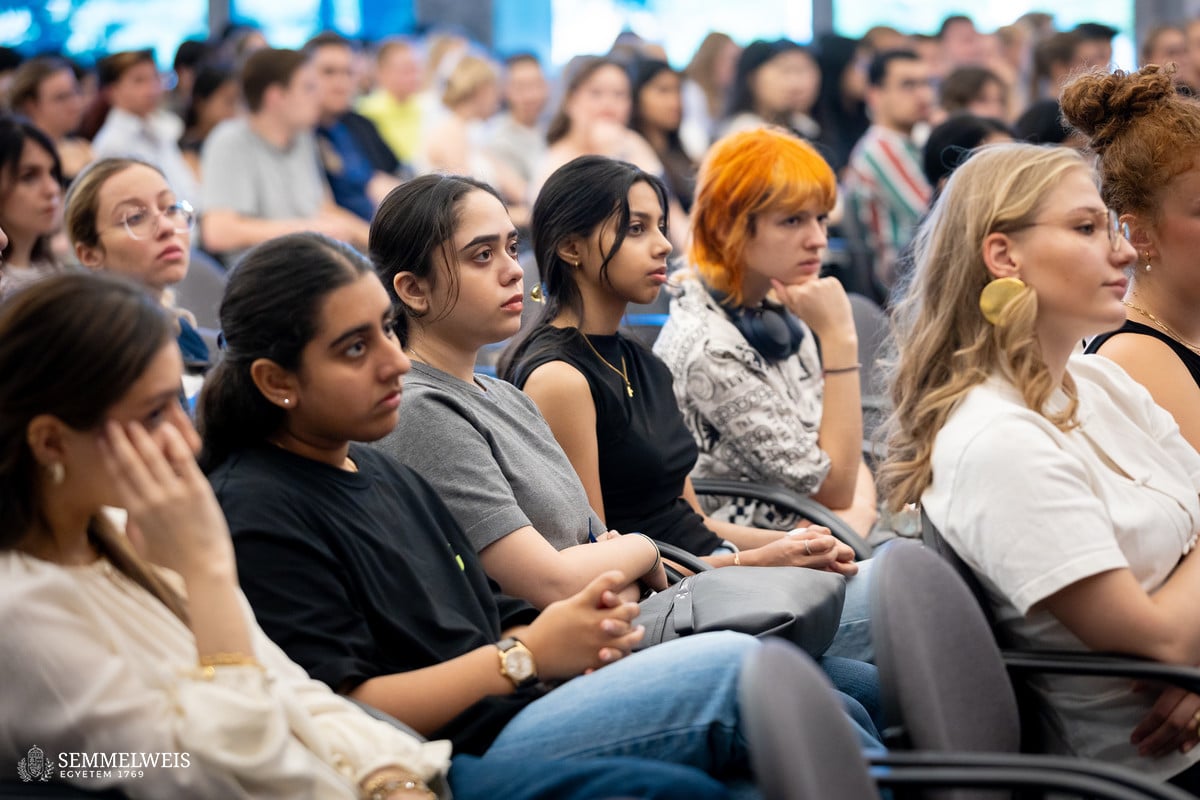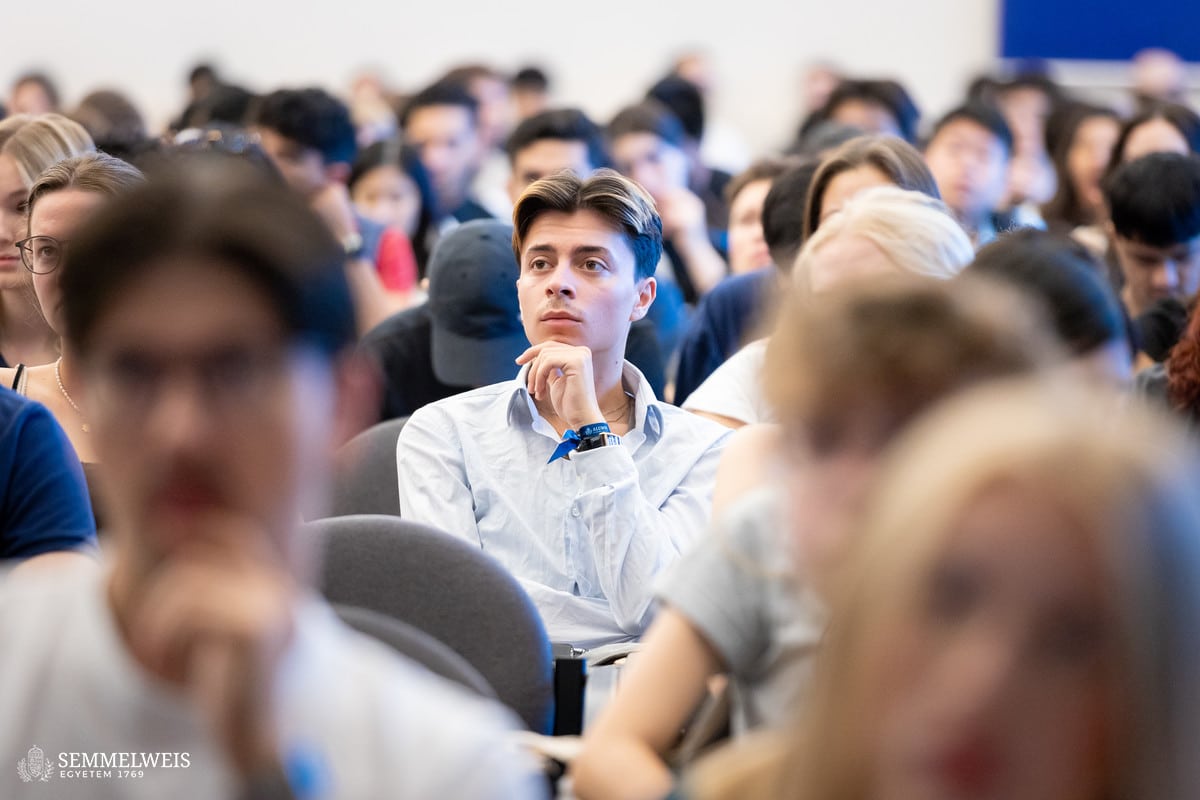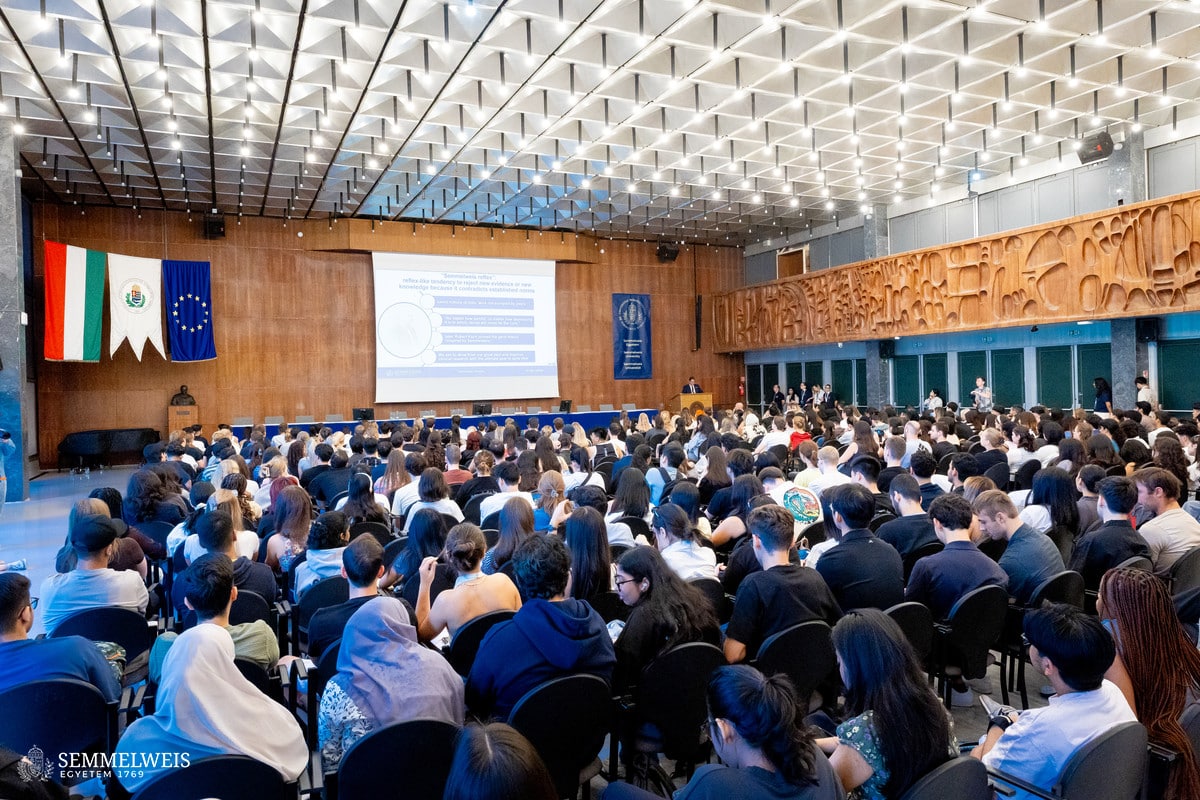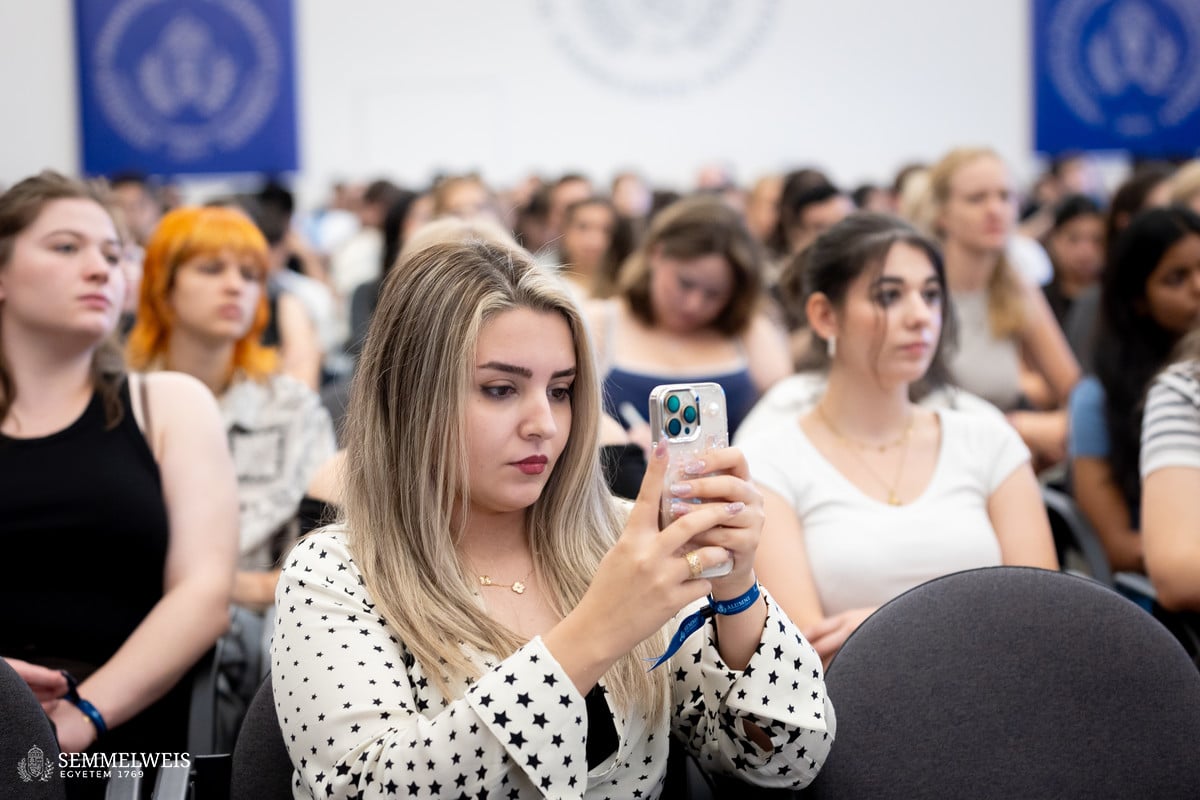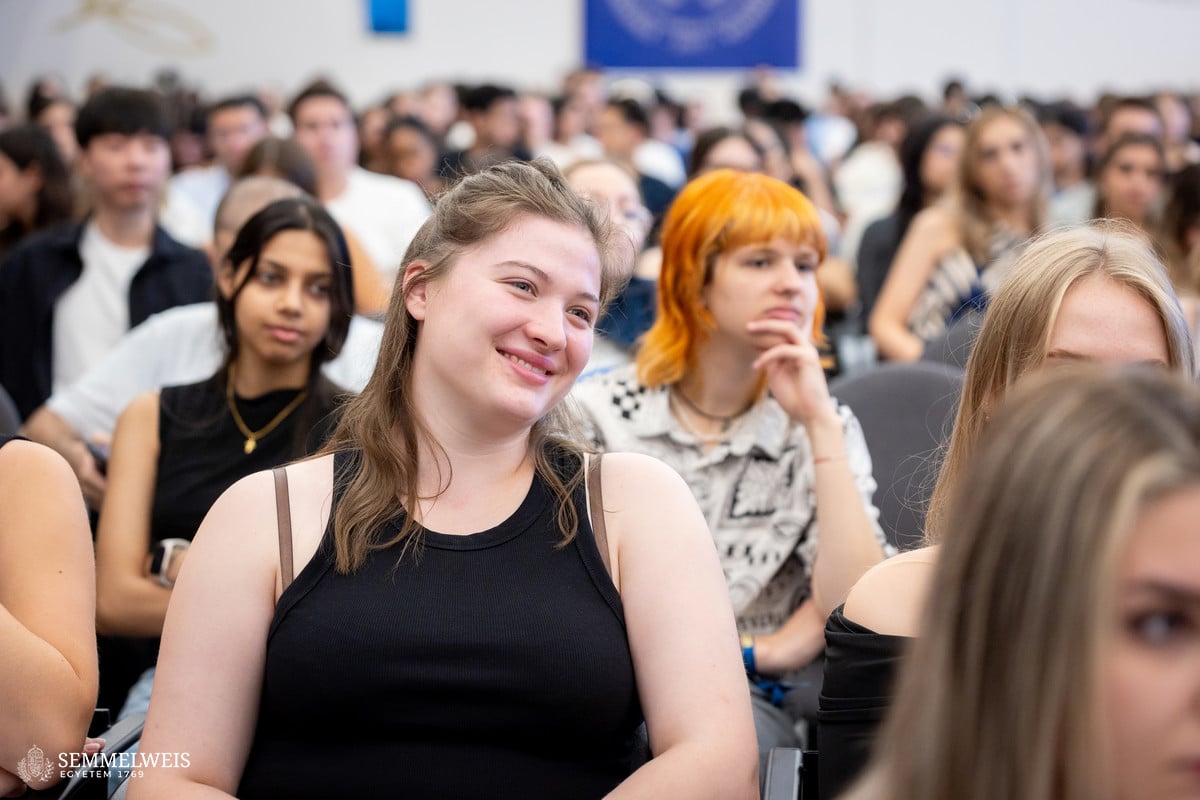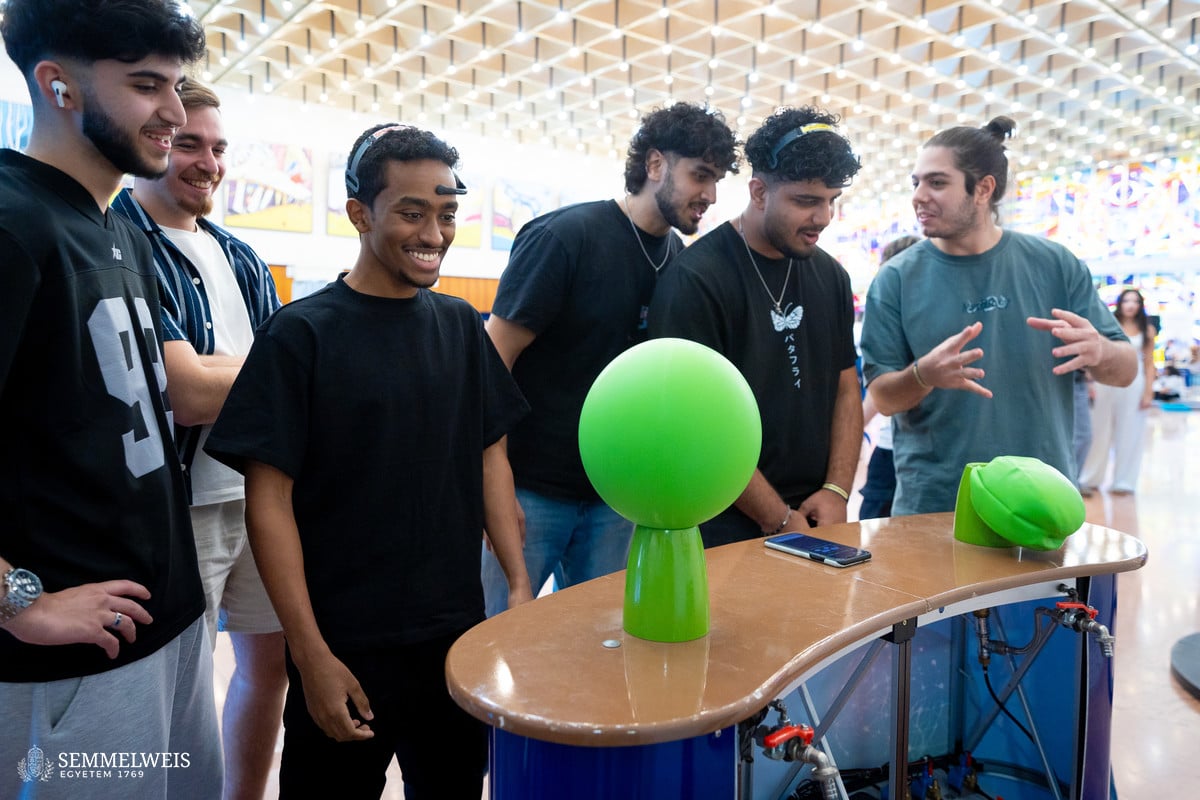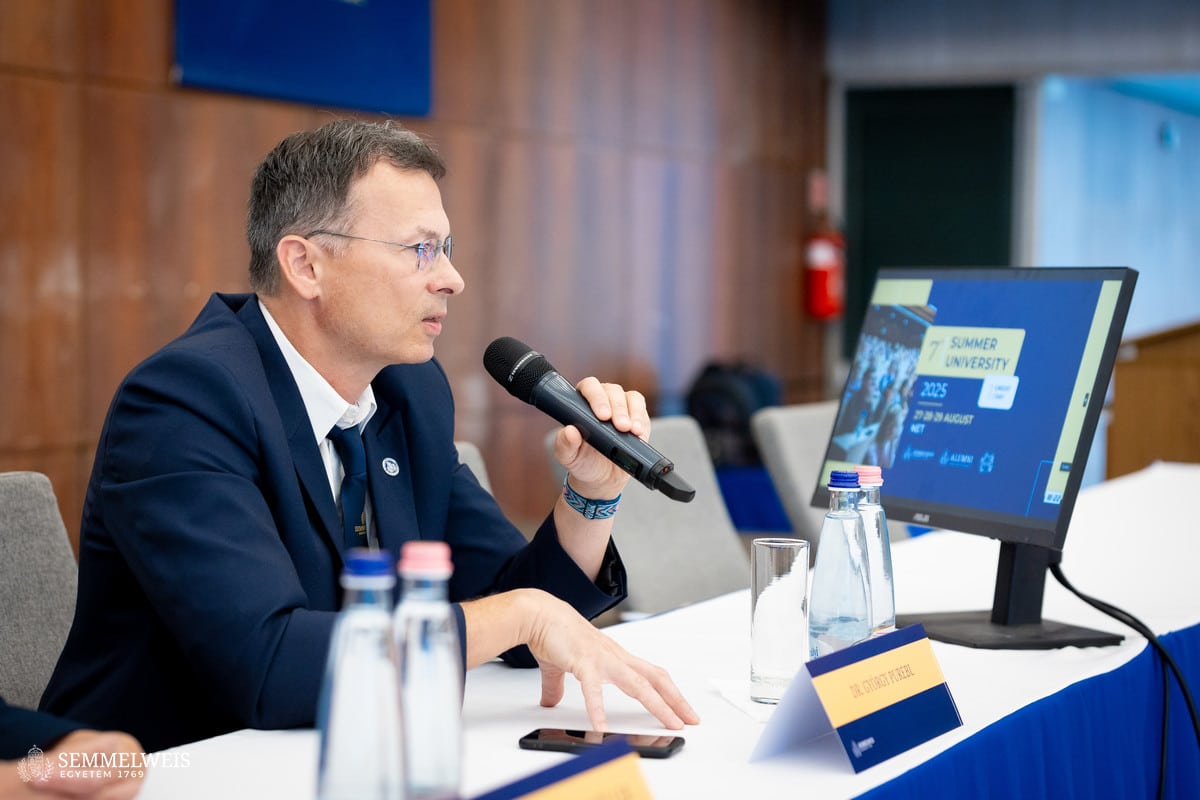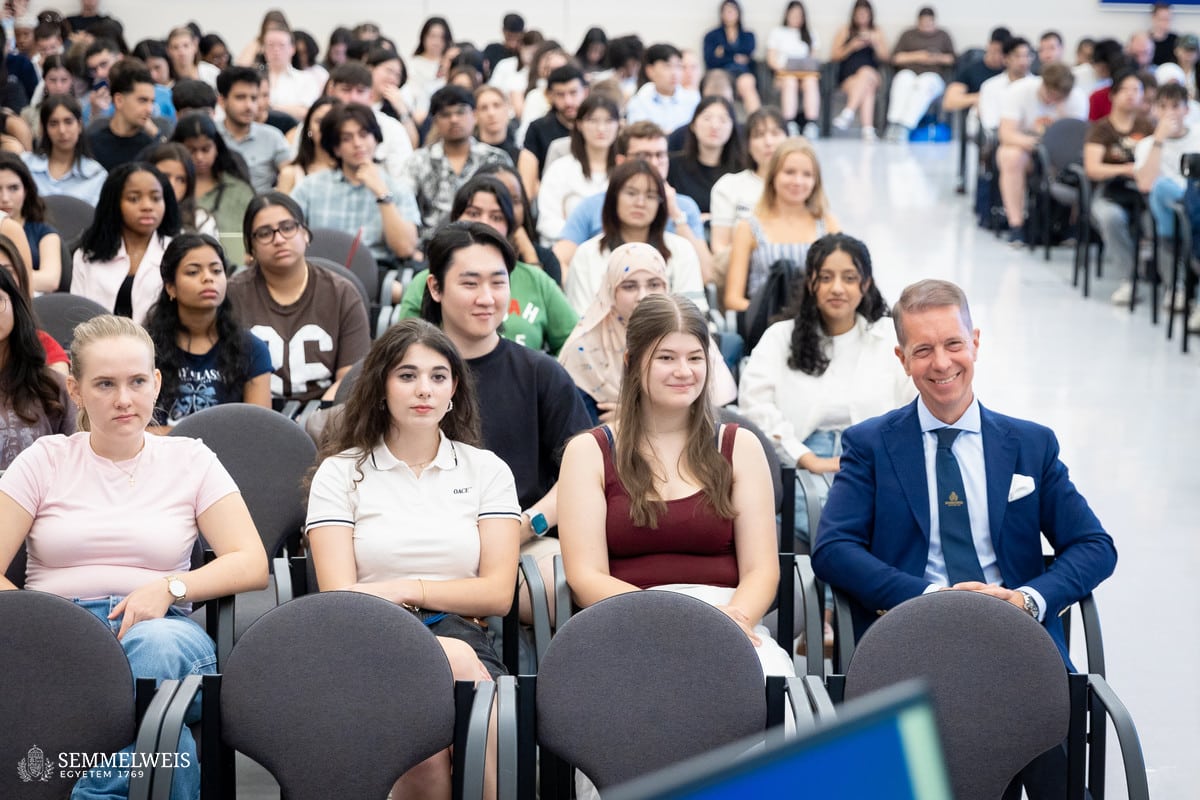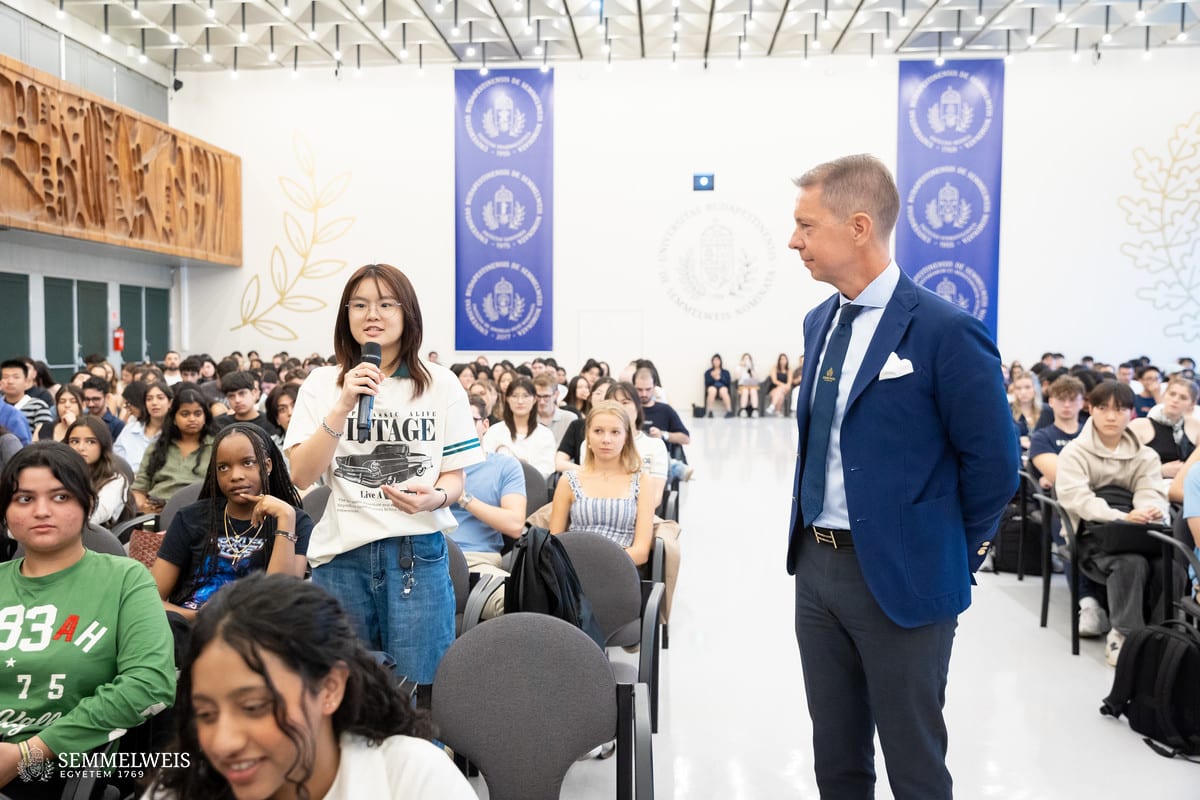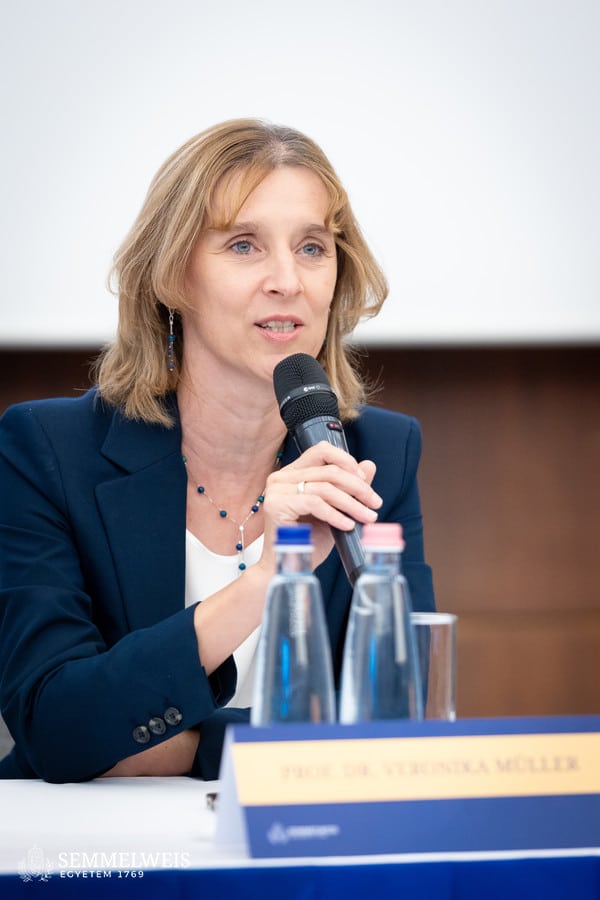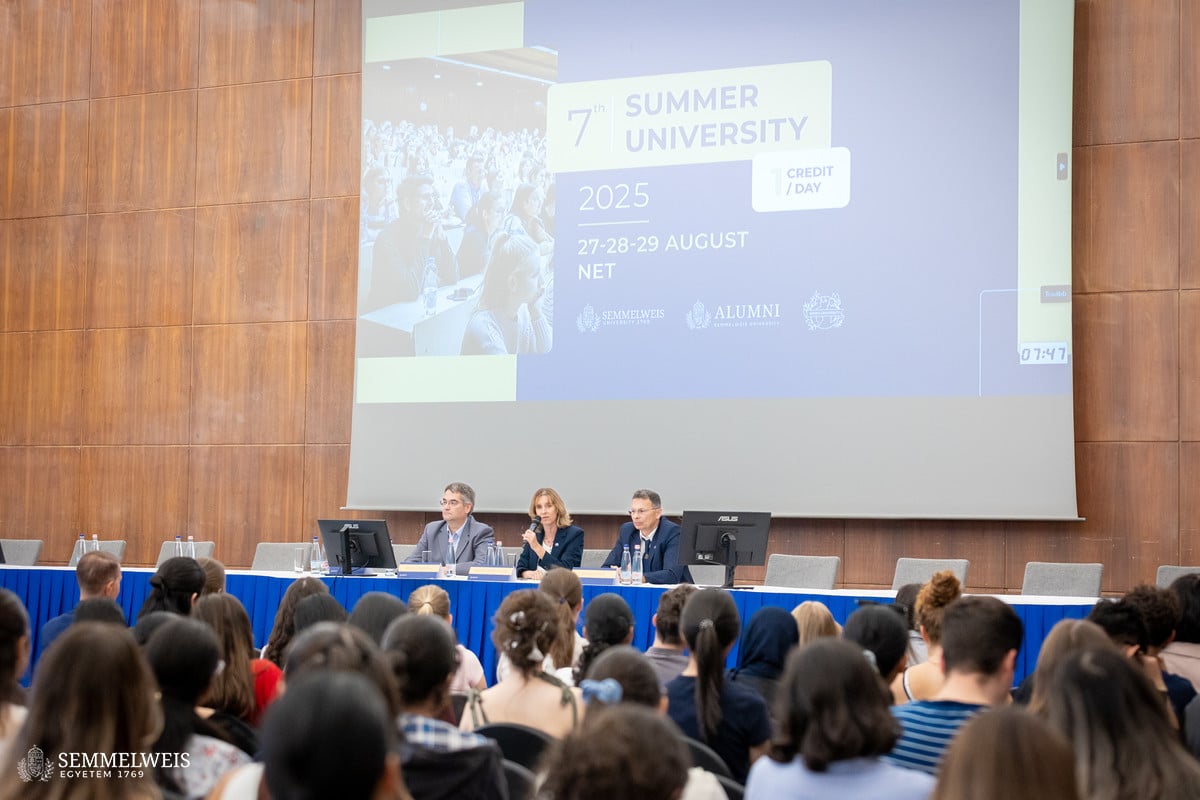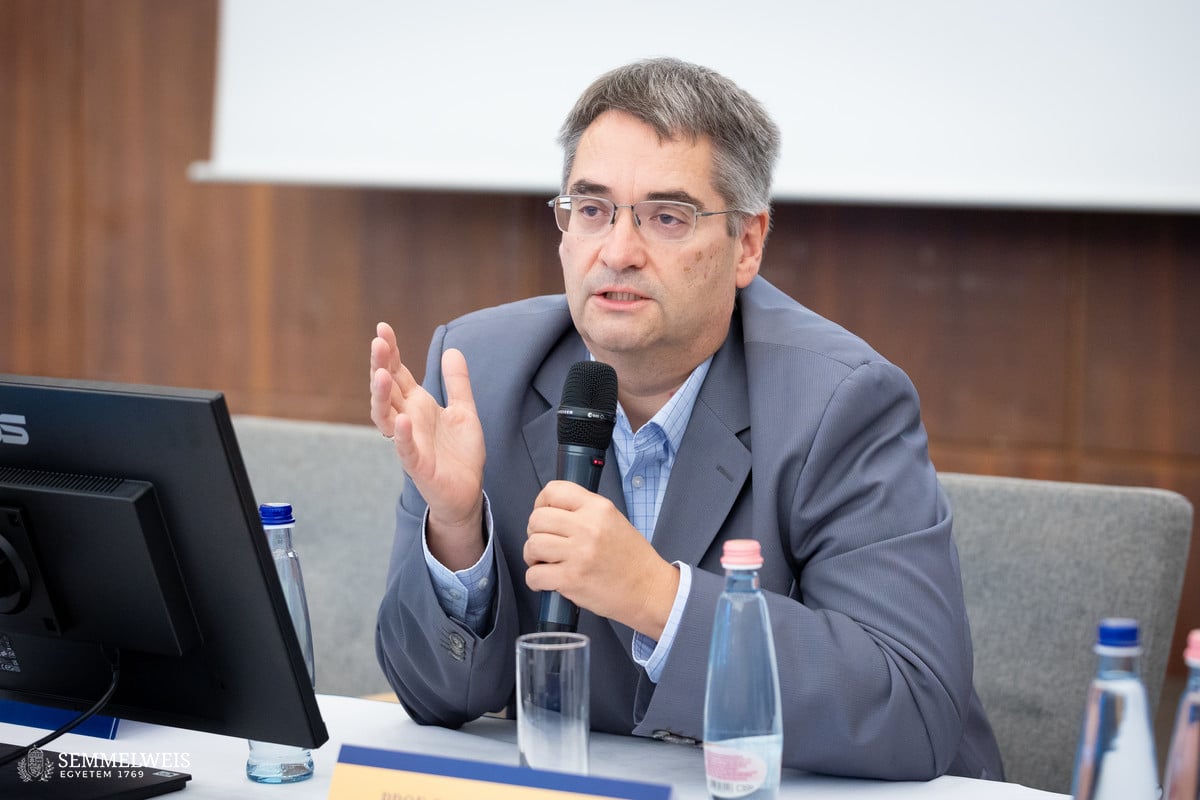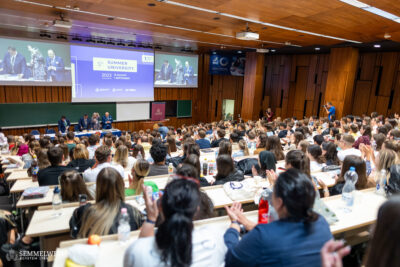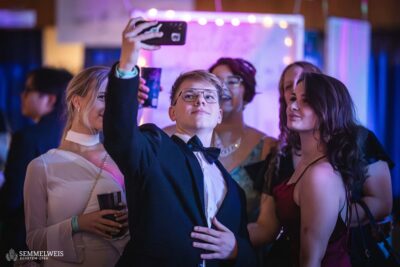On Day Zero or Green University Day, the program began with an opening speech by Dr. Alán Alpár, Vice-Rector for International Studies at Semmelweis University. He recalled that the Summer University had been created to inspire reflection and broaden perspectives before the start of the academic term. Therefore, every year distinguished speakers are invited to address topics beyond students’ core studies. Building on this tradition, the organizers launched Green University Day at the initiative of students to raise awareness of sustainability and address climate anxiety. In his speech, the vice-rector emphasized the importance of learning from past generations: “Most of us still remember how our grandparents lived and how they mastered their day. And there was a key word in their lives: to adjust to nature.” He also stressed that people had to recognize their natural limits and take responsibility for their everyday choices.
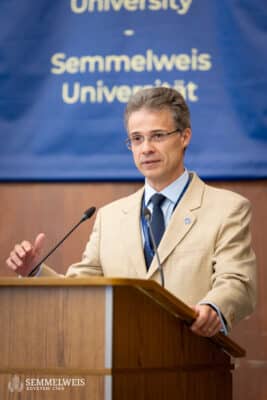 Following the opening address, participants were able to listen to presentations on a range of topics concerning ecological responsibility and sustainable living: healthcare’s environmental burden; socio-economic responses to environmental shocks; optimal, green pharmacotherapy and prescription precision; links between health and climate and environmental change; innovation in healthcare; the role of universities in a sustainable future; the sustainable academic participation of women in light of the role of PMS and PMDD; climate change and mental health; personal and planetary health; and ‘green’ chemistry.
Following the opening address, participants were able to listen to presentations on a range of topics concerning ecological responsibility and sustainable living: healthcare’s environmental burden; socio-economic responses to environmental shocks; optimal, green pharmacotherapy and prescription precision; links between health and climate and environmental change; innovation in healthcare; the role of universities in a sustainable future; the sustainable academic participation of women in light of the role of PMS and PMDD; climate change and mental health; personal and planetary health; and ‘green’ chemistry.
Day 1 opened with welcome notes by Dr. Alán Alpár. He recalled that the original goal of the Summer University was to provide Hungarian-language students with some “ammunition” for the upcoming academic year. The idea was also well received by international students, and two years ago, attendance grew so much that the international section of the Summer University had to move to a separate building. The vice-rector emphasized that the program centered on topics suggested by students, as well as talks on mental health, well-being, and life as an international student in Budapest.
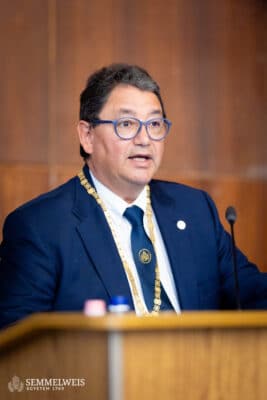 In his keynote presentation, Rector Dr. Béla Merkely provided a detailed history of the 256-year-old institution, noting that 2025 marked a triple anniversary, with the Faculty of Dentistry and the Faculty of Pharmaceutical Sciences celebrating their 70th jubilee and the Faculty of Health Sciences commemorating its 50th anniversary. He also pointed out that this year had seen the highest number of enrolled students since the launch of the international program in 1983. Summarizing the significance of Semmelweis’s discovery and the resistance from his contemporaries, he emphasized that the university’s mission was to build on its past and improve clinical research with the ultimate goal of saving lives. “Semmelweis’s legacy belongs to all those who practice their profession in his spirit,” he added. Speaking of the curricular reforms of 2019 and 2024, he highlighted that the resulting new concept introduced modern educational methodologies, block teaching in clinical training, mentoring programs to reduce dropout rates, and laid emphasis on enhancing cooperation between university faculties. The rector also talked about the over 200 international partnerships of Semmelweis University, which allow students to gain experience all over the world.
In his keynote presentation, Rector Dr. Béla Merkely provided a detailed history of the 256-year-old institution, noting that 2025 marked a triple anniversary, with the Faculty of Dentistry and the Faculty of Pharmaceutical Sciences celebrating their 70th jubilee and the Faculty of Health Sciences commemorating its 50th anniversary. He also pointed out that this year had seen the highest number of enrolled students since the launch of the international program in 1983. Summarizing the significance of Semmelweis’s discovery and the resistance from his contemporaries, he emphasized that the university’s mission was to build on its past and improve clinical research with the ultimate goal of saving lives. “Semmelweis’s legacy belongs to all those who practice their profession in his spirit,” he added. Speaking of the curricular reforms of 2019 and 2024, he highlighted that the resulting new concept introduced modern educational methodologies, block teaching in clinical training, mentoring programs to reduce dropout rates, and laid emphasis on enhancing cooperation between university faculties. The rector also talked about the over 200 international partnerships of Semmelweis University, which allow students to gain experience all over the world.
Days 1 and 2 covered scientific lectures on dementia research, robotic surgery, food sciences and dietetics, digital dentistry, pharmacy, toxicology, exoplanet revolution, and digital defense. The support-themed talks focused on mindfulness and mental well-being, sports, careers advice, and everyday productivity, as well as tips on living in Hungary and Budapest.
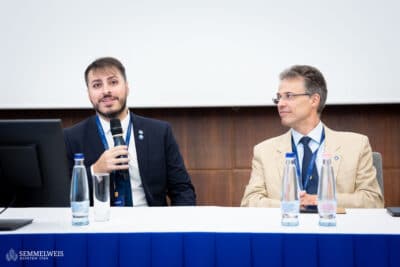 Continuing the tradition from previous years, the session More than a Degree was devoted to an interactive discussion with an international alumnus. This year, Dr. Arvin Shahbazi, Assistant Professor at the Department of Anatomy, Histology and Embryology as well as the Department of Restorative Dentistry, and researcher at the Department of Periodontology, chatted with Dr. Alán Alpár about his over 15 years at Semmelweis. Contemplating what drives an international student to pursue their graduate and postgraduate studies and build a professional career in a foreign country, he recalled the magic of lab coats, the supportive and friendly approach of his professors at Semmelweis, and the opportunity to start teaching relatively early on. “If you are successful in one place and you see your path, and you’re enjoying your life, which I was doing, then it’s not really necessary to overcomplicate everything,” he shared about the reasons for his stay. He was at a crossroads at the time of his graduation, when he had to choose between two job offers, but opted for Semmelweis as he felt appreciated and could see himself here in 5-10 years. The words of his professor – that they needed young, hardworking students from their department to stay and grow with them – proved to be a decisive factor as well. He also referenced his father’s advice on patience, who said that starting here a few years ago was like watering a tree, “and now you can see the fruits forming; if you continue for ten more years, imagine how big it will grow and how many things you could achieve.” Dr. Arvin Shahbazi also shared his advice that students should start building their careers years before graduation; otherwise, “when you toss the hat, as soon as it falls, you will ask yourself ‘so what?’ instead of enjoying your accomplishments and options.” When it was suggested to him to start his PhD studies, he had no prior experience with research, but just as when studying biology in prep college, he managed to develop the necessary skills “from scratch” and now enjoys combining a clinical and academic career. “Science is kind of addictive. Once you start, you want to do it more, you want to dive into everything. I was always looking to do something unique,” he said. He believed entering science meant accepting failures, as without failures, science made no sense. He closed the discussion by sharing a moment from his research in forensic medicine, when studying the hard palate required an animal specimen. He went to the butcher and asked for a sheep’s head to be dissected in a specific way, but as the butcher was having difficulties, he offered to do the dissection himself. Standing behind the counter, immersed in the task, he suddenly heard one of his students asking, “Doctor, have you changed your job?” Dr. Arvin Shahbazi recalled.
Continuing the tradition from previous years, the session More than a Degree was devoted to an interactive discussion with an international alumnus. This year, Dr. Arvin Shahbazi, Assistant Professor at the Department of Anatomy, Histology and Embryology as well as the Department of Restorative Dentistry, and researcher at the Department of Periodontology, chatted with Dr. Alán Alpár about his over 15 years at Semmelweis. Contemplating what drives an international student to pursue their graduate and postgraduate studies and build a professional career in a foreign country, he recalled the magic of lab coats, the supportive and friendly approach of his professors at Semmelweis, and the opportunity to start teaching relatively early on. “If you are successful in one place and you see your path, and you’re enjoying your life, which I was doing, then it’s not really necessary to overcomplicate everything,” he shared about the reasons for his stay. He was at a crossroads at the time of his graduation, when he had to choose between two job offers, but opted for Semmelweis as he felt appreciated and could see himself here in 5-10 years. The words of his professor – that they needed young, hardworking students from their department to stay and grow with them – proved to be a decisive factor as well. He also referenced his father’s advice on patience, who said that starting here a few years ago was like watering a tree, “and now you can see the fruits forming; if you continue for ten more years, imagine how big it will grow and how many things you could achieve.” Dr. Arvin Shahbazi also shared his advice that students should start building their careers years before graduation; otherwise, “when you toss the hat, as soon as it falls, you will ask yourself ‘so what?’ instead of enjoying your accomplishments and options.” When it was suggested to him to start his PhD studies, he had no prior experience with research, but just as when studying biology in prep college, he managed to develop the necessary skills “from scratch” and now enjoys combining a clinical and academic career. “Science is kind of addictive. Once you start, you want to do it more, you want to dive into everything. I was always looking to do something unique,” he said. He believed entering science meant accepting failures, as without failures, science made no sense. He closed the discussion by sharing a moment from his research in forensic medicine, when studying the hard palate required an animal specimen. He went to the butcher and asked for a sheep’s head to be dissected in a specific way, but as the butcher was having difficulties, he offered to do the dissection himself. Standing behind the counter, immersed in the task, he suddenly heard one of his students asking, “Doctor, have you changed your job?” Dr. Arvin Shahbazi recalled.
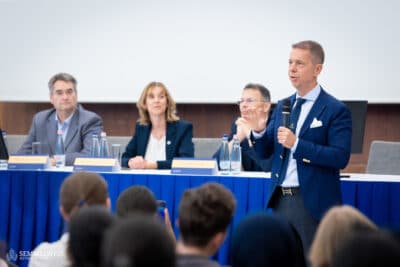 On the second day of the Summer University, a round-table discussion chaired by Dr. Péter Nyirády, Dean of the Faculty of Medicine (ÁOK), offered students an overview of the full arc of medical education – from basic sciences to clinical practice and student support. The event featured three speakers: Dr. Attila Mócsai, Vice-Dean for Science at the Faculty of Medicine and Head of the Department of Physiology; Dr. György Purebl, Vice-Dean for Educational Affairs and Director of the Institute of Behavioral Sciences; and Dr. Veronika Müller, Vice-Dean of the Faculty of Medicine and Director of the Department of Pulmonology. Using the metaphor of a triathlon, Dr. Péter Nyirády compared medical training to swimming, cycling, and running, stressing that a strong foundation, endurance, and perseverance are all necessary to reach the finish line of becoming a doctor. “The result depends not only on what you are given, but also on the effort you put in,” he emphasized.
On the second day of the Summer University, a round-table discussion chaired by Dr. Péter Nyirády, Dean of the Faculty of Medicine (ÁOK), offered students an overview of the full arc of medical education – from basic sciences to clinical practice and student support. The event featured three speakers: Dr. Attila Mócsai, Vice-Dean for Science at the Faculty of Medicine and Head of the Department of Physiology; Dr. György Purebl, Vice-Dean for Educational Affairs and Director of the Institute of Behavioral Sciences; and Dr. Veronika Müller, Vice-Dean of the Faculty of Medicine and Director of the Department of Pulmonology. Using the metaphor of a triathlon, Dr. Péter Nyirády compared medical training to swimming, cycling, and running, stressing that a strong foundation, endurance, and perseverance are all necessary to reach the finish line of becoming a doctor. “The result depends not only on what you are given, but also on the effort you put in,” he emphasized.
Dr. Attila Mócsai explained the central role of the basic sciences in the first two years of medical training. Drawing on an analogy from his time in San Francisco, he likened them to the hidden foundations of skyscrapers that keep buildings standing during earthquakes. He urged students to balance memorization with understanding and highlighted repetition as key to mastering knowledge.
Dr. György Purebl turned to the importance of preclinical subjects and the university’s support systems. He reminded students that medical communication begins in the first year, since soft skills are essential before meeting patients. Recognizing the diversity of student backgrounds, he encouraged them to use the university’s mentoring program, psychological counselling services, and community activities.
Finally, Dr. Veronika Müller guided students through the clinical years, emphasizing collaboration across specialties. She urged freshmen to engage in nursing practice, clinical shadowing, and research from the earliest stages. “Please always keep your eyes on the goal – it’s being a physician,” she said, underlining both professional dedication and the value of community life, from sports to music. In response to a student question about the extent to which the role of AI in healthcare would be part of the curriculum, she pointed out that students as well as educators would have to engage with AI and shape its future together. Dr. György Purebl added that the coming four to five years would see AI profoundly penetrating higher education, and so current students and teachers were the “test generation” for its use.
Dr. Balázs Csizmadia, Judit Szabados-Dőtsch
Photos by Boglárka Zellei – Semmelweis University
